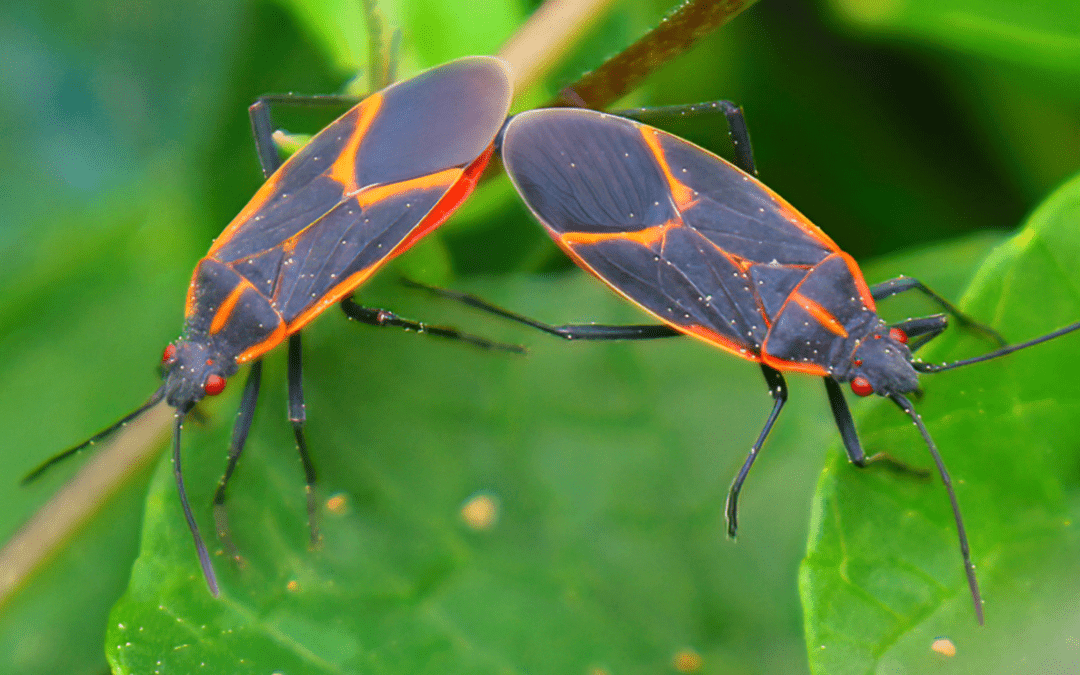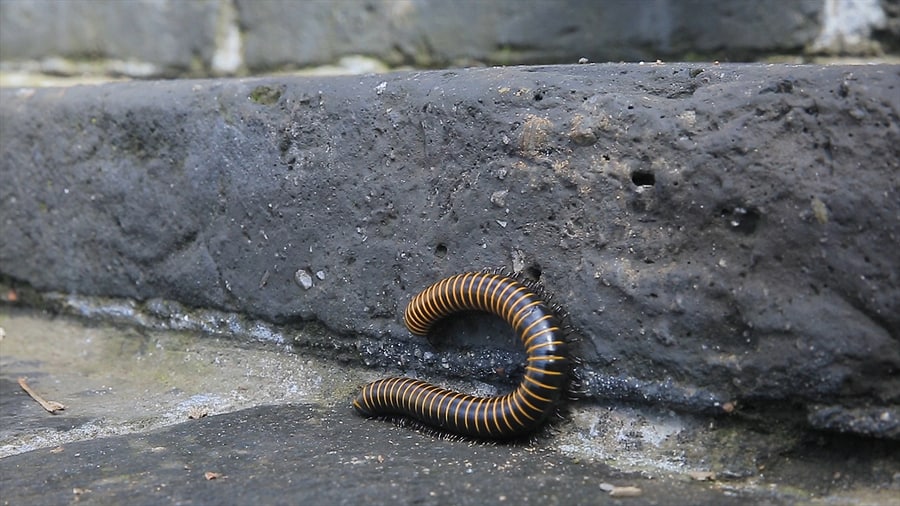READY TO GET STARTED?
REQUEST A FREE ESTIMATE
Fill out the form below or call (888) 466-7849 for a free, no-obligation estimate.

During the impending cooler months, some pests will begin seeking warmth and shelter for survival. These pests, known as overwintering pests, can survive cold temperatures due to these activities. There are three common overwintering pests: stink bugs, ladybugs, and boxelder bugs. They don’t cause any harm to you or your home, but they can become a nuisance once they get inside. Let’s break them down and discover the best ways to keep them away from your home.
These armor-shaped insects are an invasive species known to release an odor when disturbed or crushed. They pose no threat to humans or the structure of your home but can become a nuisance when an infestation occurs. They feed on a variety of plants, including fruits like apples, peaches, and figs. They prefer moist, mild climates and can be found in bathrooms and kitchens.
These harmless, overwintering pests are found worldwide and have over 5,000 known species. Ladybugs have an oval, dome-shaped body with a hard-shell wing that covers their inner wings. They are deemed beneficial and consume plant-eating insects, such as aphids, mealybugs, mites, and scale insects. During the colder months, they search for warmth and shelter. They can take over your home in a matter of days and can become a major nuisance when large populations congregate.
These pests are named for feeding off maple and seed-bearing boxelder trees in the warmer months. Boxelder bugs are sneaky pests that can easily make your home theirs. These pests are oval-shaped and elongated, with a reddish black body and orange markings on their back. They are considered more assertive than other overwintering species, puncturing skin when they feel threatened. The result is similar to that of a mosquito bite, so it shouldn’t be something to worry about.
If you suspect you have an overwintering pest infestation, contact a professional, local pest control company to provide you with a thorough evaluation and treatment plan.

Millipedes are common household pests that are brownish-black in color and that can grow to about an inch in length. Also known as “thousand-leggers,” these pests don’t actually have 1000 legs. They do, however, have 2 pairs of very short legs on each segment of their body. They are often confused with centipedes which only have 1 pair of legs per body segment. Millipedes crawl slowly and will curl into a “c” shape and remain motionless when they are disturbed. They can also secrete an unpleasant smelling odor.
Millipedes overwinter as adults and lay their eggs in the spring. They can live for several years. They are scavengers, eating primarily decomposing vegetation. They are attracted to cool, dark, moist environments (like compost piles, flower beds, mulch, rotting logs, and under rocks and logs). When the weather is hot and dry or there is an overabundance of water, they will emerge and make their way into your home in search of moisture or shelter. They can infest in large numbers but they don’t bite, sting, transmit diseases, infest food, clothing, or even dry wood.
Millipedes will come indoors for a variety of reasons. When the weather is hot and dry, they will invade your home in search of moisture. When conditions are extremely wet they will be forced to higher ground (e.g. concrete slabs, foundations, and siding). In the fall they migrate in search of places to overwinter. In these conditions, they will make their way into your home through door thresholds (especially garage and sliding glass doors), through expansion joints, and through voids in concrete block walls. Millipedes cannot survive indoors more than a day or two.
Now that you know more about millipedes and what attracts them to your home, what can you do to keep them from infesting your personal space?
Chemical treatments indoors are usually not very effective against millipedes. If you have them inside just sweep or vacuum them up and dispose of them. Chemical treatments outdoors can help keep them from crossing the threshold inside. If you have a problem with millipedes, consider calling a professional pest control company for an evaluation and treatment plan.
How To Keep Wildlife Out of Your Yard
How Common is the American Cockroach?

While most of us look forward to the holidays that come with the onset of winter, many of us don’t look forward to the snow, ice, and freezing temperatures that also come along with it. Pests feel the same way we do about cold weather and have developed several different methods to survive these frigid temperatures. So where do pests go in the winter? As much as we’d like to believe they just disappear until spring, unfortunately this isn’t the case. Pests have developed 3 major ways to survive winter:
Migration is the seasonal movement from one region to another. Just like humans, pests want to go where it’s warmer when the weather gets cold. Some pests will move to southern regions to escape the cold and return to the northern areas when the weather starts to warm. One of the most well known examples of migration is the monarch butterfly.
Hibernation is a period of time spent in a dormant state in order to survive the unfavorable conditions of winter. Bears aren’t the only animals that hibernate during the winter! Ladybugs hibernate at high elevations. Wasps seek shelter in eaves and attics of houses or barns to hibernate. Many other pests hibernate in trees, leaf debris, under logs, and under rocks. Honeybees stay in hives during the winter and form clusters when the temperatures start to fall.
Overwintering is the process in which pests pass through or wait out the winter season in sites that provide protection from the cold winter temperatures. Ladybugs, box elders, and stinkbugs overwinter in secluded, sheltered places like your home. These pests tend to congregate in large numbers so if they overwinter in your home they could infest in large numbers. Pests like rodents, cockroaches, spiders and flies remain active during the winter in our homes. They move indoors in search of warmth and food. Spiders are relatively harmless but flies can contaminate food and surfaces. Rodents can not only contaminate your food and insulation but can also chew through wood causing structural damage and chew through wires putting your home at risk of fire and other issues.
Now that you know where pests go in the winter you can help get your home ready to prevent these overwintering pests from invading your space. If you suspect you have a winter pest problem contact a professional who can help identify the pests and help you develop a treatment and prevention plan.